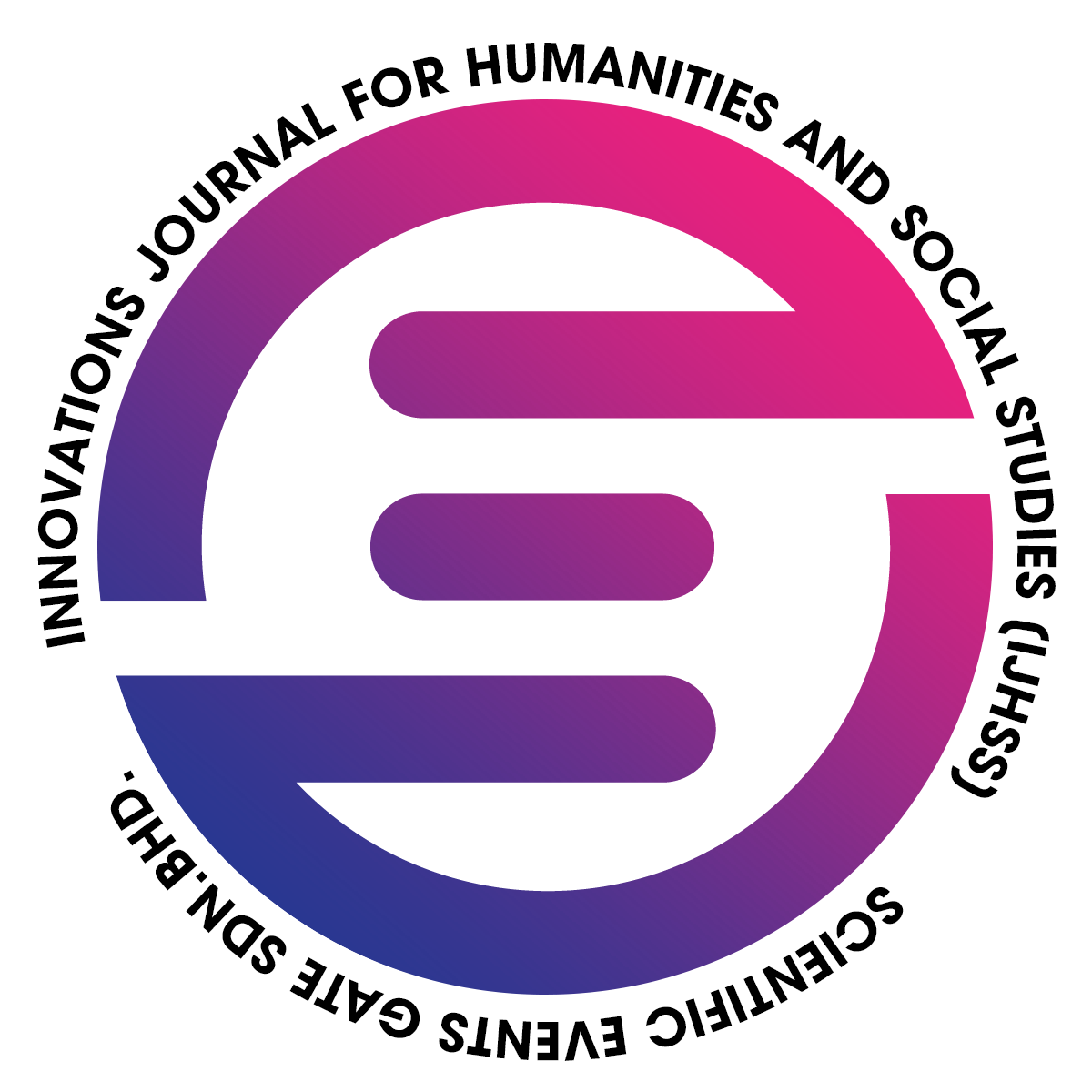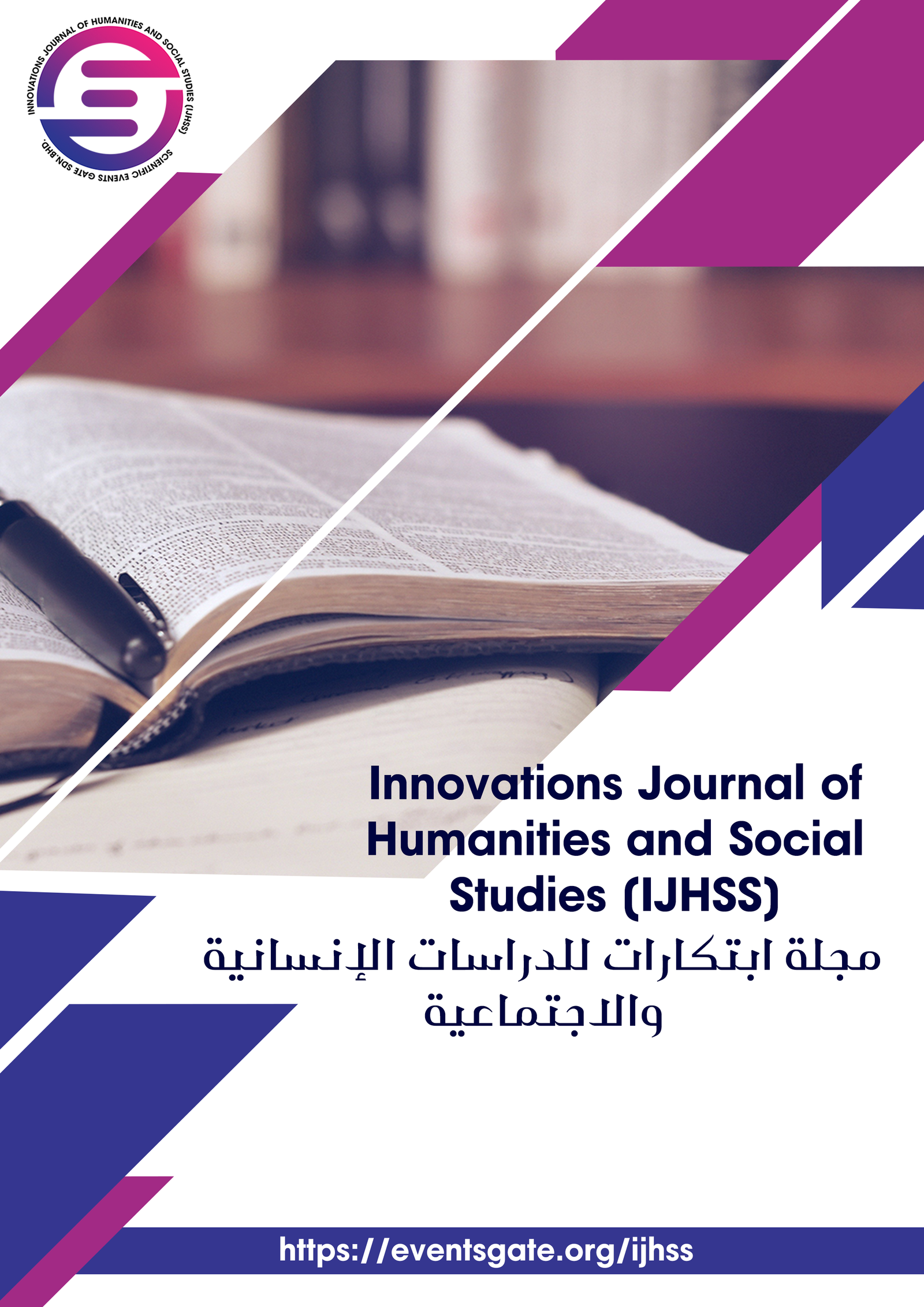Digital Media and Its Role in Enhancing the Use of the Arabic Language: A Theoretical Analysis of Linguistic Transformations in the Digital Space
DOI:
https://doi.org/10.61856/pn7qv993Keywords:
Digital media, Media, ArabicAbstract
This study aims to analyze the role of digital media in promoting the use of the Arabic language, with a focus on the linguistic transformations taking place in the digital environment. It explores the impact of modern media on Arabic vocabulary and structures, highlighting how technology has introduced new expressions that have become part of everyday discourse. The study also addresses challenges such as the limited availability of Arabic digital content and the growing influence of colloquial language and Latin script. Using a theoretical and analytical approach, the research investigates the relationship between digital media and Arabic, drawing on relevant media and technology theories. It also explores the potential of artificial intelligence to support Arabic content and discusses the technical, social, and legal barriers hindering its spread. The study presents examples of digital initiatives contributing to the promotion of Arabic, such as Alwaraq and Khan Academy. It concludes that while digital media offer valuable opportunities to support the Arabic language, overcoming current challenges requires comprehensive strategies to enhance Arabic content, expand its integration into AI technologies, and support media production that reinforces cultural identity.
References
المراجع العربية:
1. إمام، إبراھیم. (1999). الإعلام الرسمي وتكنولوجيا الاتصال الجماھيري. مكتبة الأنجلو المصرية، القاهرة.
2. حیاصات، أحمد. (2008). اللغة العربیة والشبكة العنكبوتیة: قضایا وحلول. مجمع اللغة العربیة، عمان، الأردن.
3. محمد قناوي، إیمان. (2018). المعوقات الاجتماعیة والاقتصادیة والإداریة للإدارة الإلكترونیة وسبل مواجھتها من وجھة نظر العاملین بالجامعة. مجلة كلیة التربیة، جامعة الأزھر، العدد 177، الجزء الثاني، ینایر.
4. أونو، ب. (2011). التكنولوجیا التواصلیة والخبرة في التعلیم. أكسارا، جاكرتا، بومي.
5. میلود، عیسى جمال. (2016). واقع اللغة العربیة في وسائل الإعلام العربیة: إشكالیة الفصحى والعامیة. المجلة العالمیة اللیبیة، كلیة التربیة، جامعة بنغازي، المرج.
6. الفرجاني، عبد العظیم. (2002). التكنولوجیا وتطویر التعلیم. دار غریب، القاهرة.
7. اللجنة الاقتصادیة والاجتماعیة لغربي آسیا. (2005). المحتوى الرقمي العربي: الفرص، الأولویات والتوجھات. الأمم المتحدة، نیویورك.
8. الزیادي، لطفي. (2021). وسائل الاتصال والإعلام والتحول الرقمي: قراءة تاریخیة وملاحظات آنیة. مجلة البحوث الإعلامیة، جامعة الأزھر، العدد السادس والخمسون، ینایر، ص. 699.
9. توفیق، محمد. (2016). دور التكنولوجیا في تعلیم اللغة العربیة. مجلة التدریس، المجلد الرابع، العدد الأول، یونیو.
10. بوذن، لمین محمد وآخرون. (2019). سبل انتشار اللغة العربیة عبر الفضاء الرقمي: الإشكالیة، المتطلبات والآفاق. مجلة مداد العربیة، العدد 5، ینایر.
11. طنطاوي، محسن میرھان. (2014). اللغة العربیة والإعلام في واقع متغیر: آفاق الاستثمار وتحدیات البقاء. بحوث مؤتمر اللغة العربیة الدولي الثالث، ص. 9.
12. الكناني، عبد توفیق. (2022). توظیف التكنولوجیا في تدریس اللغة العربیة للناطقین بھا. المجلة الدولیة للدراسات الإنسانیة والاجتماعیة، العدد 39، نوفمبر.
13. صالح، محمد مریم عبد القادر، ونصر الدین، عبد. (2013). إشكالیات اللغة العربیة في مواقع التواصل الاجتماعي: دراسة تطبیقیة على عینة من مستخدمي الفیس بوك. بحوث المؤتمر الدوري الثاني للغة العربیة، فبرایر-مایو.
14. الرجبي، ولید. (2008). اللغة العربیة بین الإعلام والإعلان وتشویھ المعاصرة: مواجھة تحدیات النقد الحادي عشر. بحوث مؤتمر جامعة جرش الأھلیة، قسم الآداب، كلیة اللغة العربیة، الأردن.
15. بوذن، لمین محمد وآخرون. (2019). سبل انتشار اللغة العربیة عبر الفضاء الرقمي. مجلة مداد العربیة، العدد 5، ینایر.
المراجع الأجنبية:
1. Aldosari, S. (2020). The Future of Higher Education in the Light of Artificial Intelligence Transformations. International Journal of Higher Education, 9(3), 145-151.
2. Li, Z., Yang, C., Huang, Q., Liu, K., & Hu, F. (2017). Big Data and Cloud Computing: Innovation Opportunities and Challenges. International Journal of Digital Earth, 10, 13-53.
3. Mahmoud, Al-Battal. (2013). Identity and Language Tensions in Lebanon: The Arabic of Local News at LBCI. In A. Rouchdy (Ed.), Language Contact and Language Conflict in Arabic. Routledge., 91-115.
4. T. A. S. Mohammed, B. Al-Sowaidi, and F. Banda. (2021). Towards a Technology-Enhanced Blended Approach for Teaching Arabic for Shari’ah Purposes (ASP) in the Light of the South African National Qualifications Framework. International Journal of Information and Education Technology, 11(1), 1-9.
5. Wicks, D. A. (2021). Minimizing Zoom Fatigue and Other Strategies for a Successful Synchronous Class Experience. In H. Han, J. H. Williams, & S. Cui (Eds.), Tackling Online Education: Implications of Responses to COVID-19 in Higher Education Globally (pp. 2–24). Cambridge Scholars Publishing.
6. Zainuddin, N., & Sahrir, M. S. (2016). Multimedia Courseware for Teaching Arabic Vocabulary: Let’s Learn from the Experts. Universal Journal of Educational Research, 4(5), 1167–1172. DOI: 10.13189/ujer.2016.040529.
Downloads
Published
Issue
Section

This work is licensed under a Creative Commons Attribution 4.0 International License.






